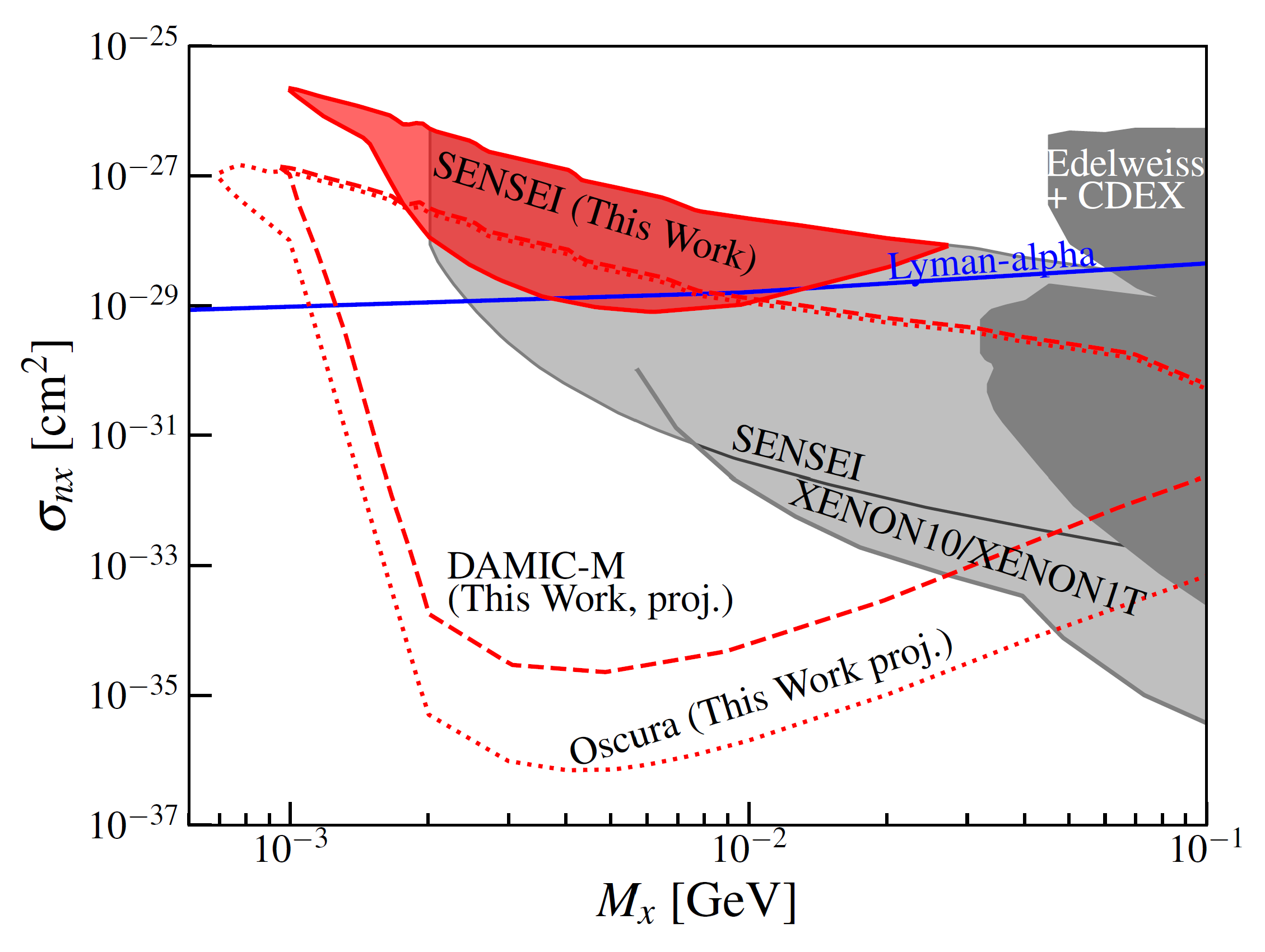Giving Dark Matter Detectors New Targets
Summary Provided by Melissa Diamond.
Queen’s University postdocs Melissa Diamond and Chris Cappiello, along with Professors Aaron Vincent and Joe Bramante recently published their work on how existing interactions between Standard Model particles can improve the reach and sensitivity of existing dark matter detectors. 85% of the matter in the Universe is composed of dark matter. One theory is that dark matter is a particle which interacts with the Standard Model very weakly (often called WIMPs). Many experiments that search for WIMP dark matter today do so by waiting for a WIMP to crash into a Standard Model particle in a detector and cause it to recoil. Usually, these recoil detectors rely on one type of dark matter-matter interaction, such as WIMPs interacting with atomic nuclei, or WIMPs interacting with electrons. These experiments are limited to looking for WIMPs which are approximately the same mass as or heavier than the particle they interact with because the WIMP-particle collision must give the particle in the detector enough momentum to produce an observable signal.
The authors found that when WIMPs interact with quarks, the building blocks of protons and neutrons and atomic nuclei, they also automatically weakly interact with electrons. This means that dark matter detectors that are designed to probe WIMP-electron interactions, are also sensitive to WIMP-nucleon interactions. Electrons are much lighter than atomic nuclei, making WIMP-electron detectors sensitive to dark matter too light to be seen in WIMP-nucleon detectors. This work shows that electron recoil experiments are sometimes even more sensitive to WIMP-nuclei interactions that existing nuclear recoil detectors. This paper was published in Physics Review Letters on January 31st 2024. https://journals.aps.org/prl/abstract/10.1103/PhysRevLett.132.051001

Plot showing constraints on dark matter nucleon interactions. Previously existing constraints from detectors are shown in gray. Astrophysical constraints are marked by the blue line. New constraints from electron recoil detectors are shown in red. The expected sensitivity of upcoming electron recoil detectors is outlined in red. For WIMPs with masses between about 1 and several hundred MeV, Electron recoil detectors will be the more sensitive to certain weak WIMP nucleon interactions than any available detector today.
